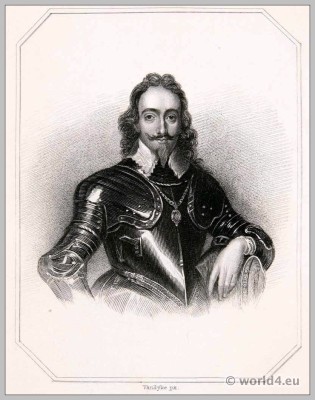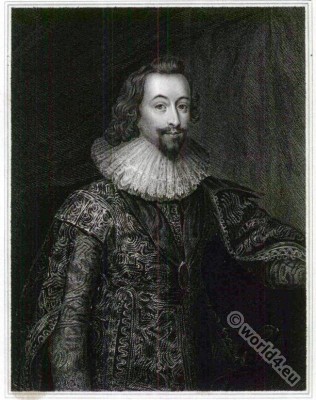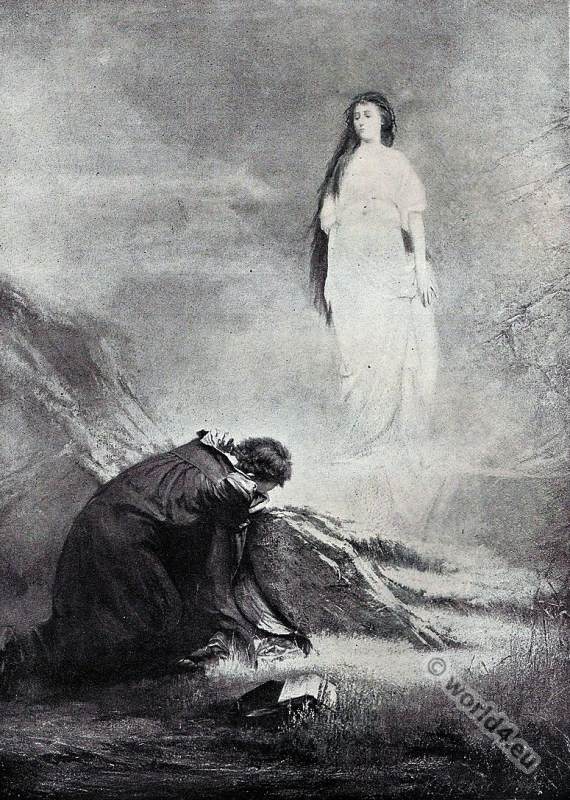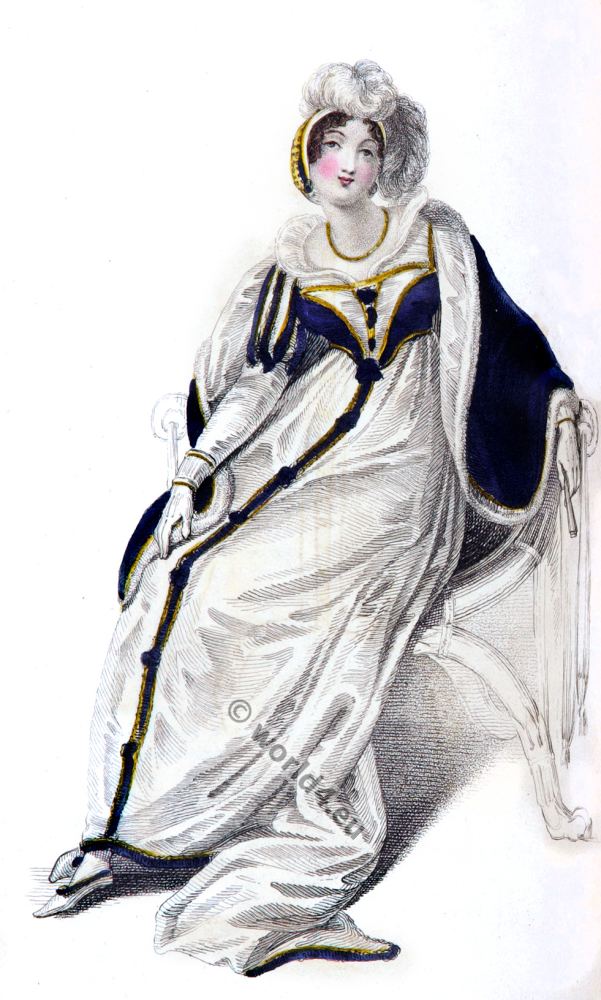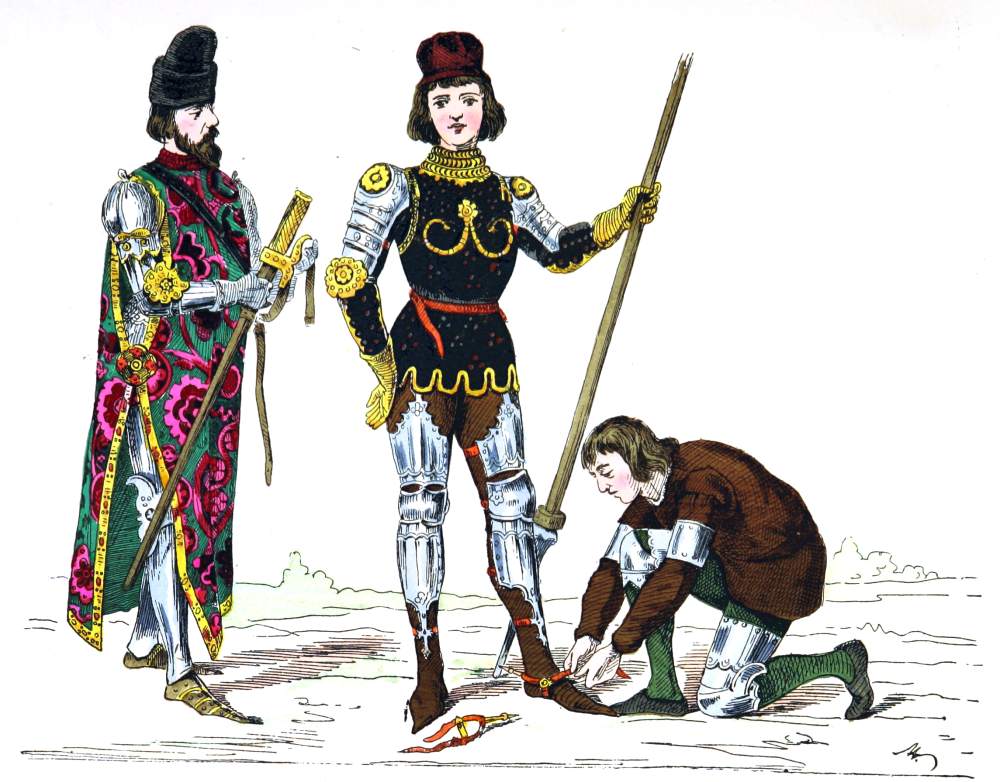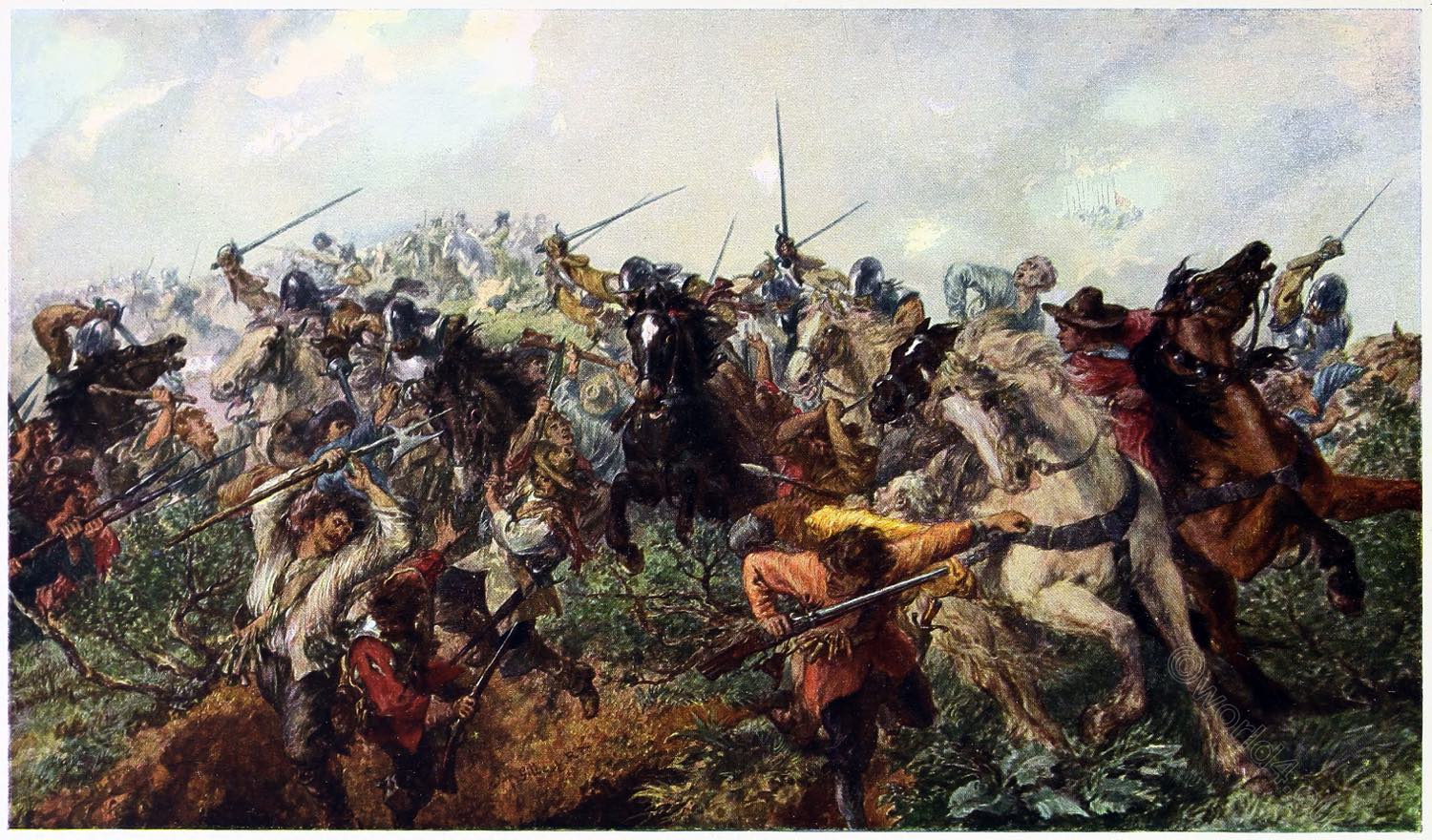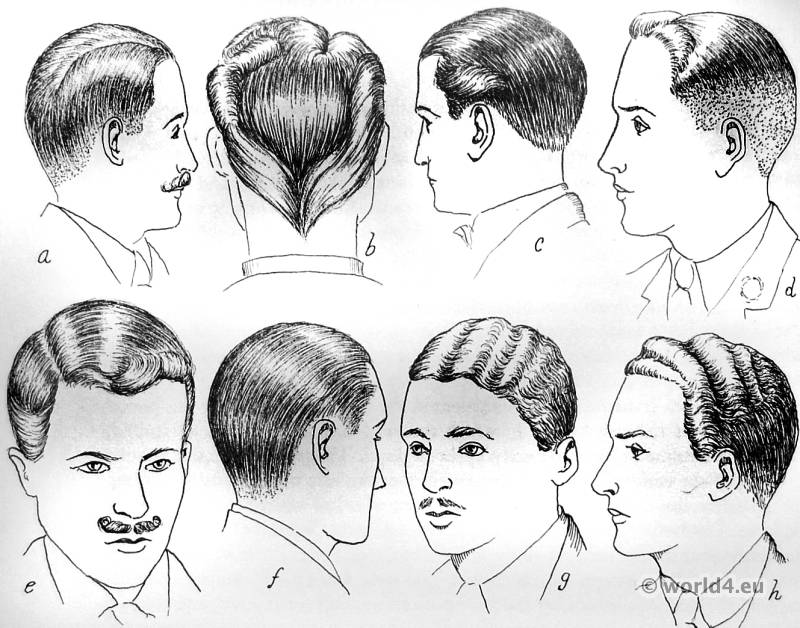
Charles I and The English Civil War 1642-1649.
The English Civil War was fought 1642-1649 between supporters of King Charles I of England (“Cavaliers”) and those of the English Parliament (“Roundheads”). It reflects not only the tensions between the absolutist minded King and the House of Commons, but also the contrasts between Anglicans, Puritans, Presbyterians and Catholics erupted.
The war ended with the execution of the King, the temporary abolition of the monarchy and the establishment of a republic in England.
The Great Civil War.
From the hour that Charles ascended the throne it became inevitable that he must come into collision with the parliament as representing the body of the people. Such demands as he made were themselves an outrage upon the constitution of England, and the threats by which they were accompanied would have been out of place even in the time of the Plantagenets.
The king was perpetually out of temper with the House of Commons, and they regarded him with suspicion, if not with dislike, and began to organize a systematic resistance to his arrogant claims;— while the people were stung to fury by the shameless favoritism displayed to Buckingham, by the successive disasters which accompanied his command, and by the treachery practised towards them by expeditions which it was pretended were for the assistance of the Protestants, while they were secretly destined to aid the king of France.
The insolent arrogance of Buckingham had become unbearable, and his disgraceful failures in the expeditions of which he was appointed to the command brought the country into contempt. Both in and out of parliament he was pronounced to be the curse of the nation. This was but a few days before he went down with the king to Deptford, to see the ships which had been prepared for operations at Rochelle, while all the time it was intended that the French Protestants should be abandoned and a peace made with Louis. The London rabble was ready for any mischief, for they partook of the general fury against the duke, whose physician, Dr. Lambe, they actually set upon and murdered in the streets, on the perhaps erroneous supposition that he had a part in his evil counsels. A doggerel distich passed from mouth to mouth saying, Let Charles and George do what they can. The Duke shall die like Dr. Lambe, and a label was stuck upon a post in Coleman Street inscribed thus:— “Who rules the kingdom? The king. Who rules the king? The duke. Who rules the duke? The devil.”
It is said that the king uttered these words to Buckingham while they looked at the ships at Deptford:— “George, there are some that wish that both these and thou mightst both perish. But care not for them; we will both perish together if thou doest.” This was significant of the public feeling, and the end was not far off. The duke went on to Portsmouth, where he was to embark for Rochelle. Upon Saturday, the 23d of August, 1629, being St. Bartholomew’s Eve, he rose up in a well-disposed humour out of his bed and cut a caper or two, and being ready, and having been under the barber’s hand (where the murderer had thought to have done his deed, for he was leaning upon the window all the while), he went to breakfast attended by a great company of commanders. Beside Soubise, there were many refugees about Buckingham; and they were seen to gesticulate very violently in conversing with the duke. This was only the habit of their country when excited,but to the English it seemed as though they threatened his grace with actual violence.
The duke left his chamber to proceed to his carriage which was in waiting, still followed by the vociferating and gesticulating Frenchmen. In the hall he was stopped by one of his officers, and at that moment he received a knife in his left breast. He drew forth the weapon, staggered, and fell, and died with the word “Villain!” upon his lips. In the throng and confusion no one saw who struck the mortal blow. Suspicion fell upon the Frenchmen, who were with difficulty saved from the fury of the duke’s attendants. Then some ran to keep guard at the gates,some to the ramparts of the town.
During this time there was a man who went into the kitchen of the very house where the deed was done, and stood there unnoticed of all. But when a multitude of captains and gentlemen rushed into the house exclaiming, “Where is the villain!” “Where is the butcher!” that man calmly came forth amongst them, saying, “I am the man; here I am.” They drew their swords and would have despatched him on the spot, but for the timely interference of secretary Carleton, Sir Thomas Morton, and some others, who took charge of him till a guard of musketeers arrived and conveyed him to the governor’s house. The assassin, who might most easily have escaped had he been so minded, had written a paper to declare his motive, imagining that he must perish on the spot, and leave nobody to speak for him. This paper was sewed in the crown of his hat half within the lining, and was to this effect:— “That man is cowardly, base, and deserved not the name of a gentleman or soldier, that is not willing to sacrifice his life for the honor of his God, his king, and his country. Let no man commend me for the doing of it, but rather disscommend themselves as the cause of it; for if God had not taken our hearts for our sins, he had not gone so long unpunished.— John Felton.”
This John Felton was a gentleman, and was known to many of the officers at Portsmouth with whom he had served on various occasions. He had been a lieutenant in a regiment employed in the previous year on the miserable expedition to the island of Rhe, and had thrown up his commission in disgust because another man had been irregularly preferred before him, and because he had been refused payment of his arrears. Felton was persistent in his assertion that he committed the deed as an act necessary for the deliverance of the country, and he was firm in declaring that he had no accomplices, and no motive but the good of the nation and the cause of the Protestant religion. He was thrown into a dungeon and laden with irons, but was afterwards removed to the Tower.
Exhortations and threats could not shake his original affirmation, and when the Earl of Dorset threatened him with the rack he said, “I am ready, yet I must tell you that I will then accuse you, my Lord of Dorset, and no one but yourself.” This was an awkward determination, but the king would have had him tortured, had not the judges feared the decision of the House of Commons, which, in face of the attempted tyranny of Charles, had on several occasions pronounced the rack and the torture to have been at all times unwarrantable by the law of England. Felton was therefore hanged at Tyburn, and his body was afterwards taken to Portsmouth and there fixed on a gibbet.
Charles did not at first appear greatly moved by the intelligence of Buckingham’s death, but afterwards it was said that he retired to his own apartment in a paroxysm of grief. He called the dead duke his martyr, caused his body to be laid secretly in Westminster Abbey, where amore public funeral with an empty coffin afterwards took place, the procession of a few courtly mourners being guarded all the way from Whitehall by train-bands armed with pike and musket, and beating drums to drown any probable cries or mutterings of the disaffected populace. The king’s alleged declaration to Buckingham that they would both perish together took a tragic meaning both for Charles and for the country, for after the death of the favorite he again essayed to reign without parliaments, and first to deny and then to defy the growing demands of a people desiring to be free and a legislative assembly determined to uphold the laws of the constitution. Nothing could teach him. He had tried to obtain his will by the plan of dissolving successive parliaments which were opposed to his exactions, he had illegally caused several persons and some obnoxious members to be arrested and imprisoned, he had spoken words that only the patience that comes of a sense of coming power could have enabled the commons to bear patiently. Each assembly was as firm and resolute as the one that preceded it. He was compelled to dissimulate,— to interpret his demands as though they differed only in words from the concessions that were offered to him, and to agree to proposals which he had just acuteness enough to see that he dare not refuse, all the time premeditating how he could avoid or renounce them. Men like Coke, Seymour, Selden, were not to be cajoled, and there were many others in the house who were not to be frightened by threats, even though they were careful to speak in bated and respectful terms of the king’s majesty.
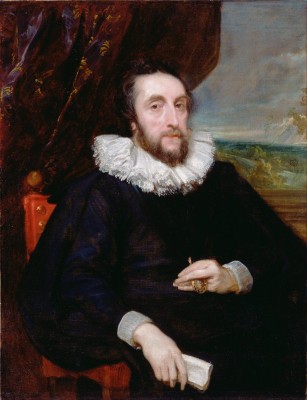
After the dissolution of his second parliament, and his refusal to listen to the petition for the reform of abuses and the dismissal of Buckingham, the Earl of Arundel was confined in his own house, the Earl of Bristol in the Tower. Meanwhile the king had begun to make up for the subsidies which he had failed to extract from the parliament by issuing a warrant under the great seal for levying duties on imports and exports, and for enforcing fines for religion. He who was secretly engaged with the King of France, and who was supported by Laud, issued orders to inquire into the arrears of fines due from the Catholics, to compound with them for immediate payments, and to insure a more regular return. Fresh privy seals for loans were issued to the nobility and to wealthy merchants and a demand for £120,000 was made on the city of London. Both London and the seaport towns were ordered to furnish ships, the lords-lieutenants of counties were ordered to raise troops, to be ready to meet insurrection at home or invasion from abroad.
The royal despotism did not stop here, however, for the money raised by these means was still insufficient. Charles’s pretended adhesion to the Protestant cause had brought nothing but disgrace to the members of the alliance. Not only the affairs of his brother-in-law the Palatine, and of his uncle the King of Denmark, but the cause of Protestantism in Germany, seemed to be desperate. King and council at once made use of these conditions as an excuse. “Parliament,” they said, with bare-faced falsehood, “was not called together, because the urgency of the case would not allow time for its assembly and deliberation.” A general loan was ordained,and every person was called upon to contribute according to the rating of the last subsidy. The people were assured that the money would all be paid back by the king to his loving subjects directly parliament had met and granted new subsidies, but this was so doubtful a promise, that a host of commissioners were sent out with books and registers and full power to exact these illegal demands. Those who refused to submit were at once made to feel the weight of the royal displeasure; the rich were imprisoned, the poorer were pressed into the army and navy, and those who were not fit for this service were mercilessly punished.
The officers of the law were stimulated to use the utmost severity, and those who showed reluctance were removed. Most of the lawyers and judges, however, were subservient enough, but they were even less so than the bishops and the high church clergy, who were at that time seeking preferment, and many of whom preached the doctrine of royal absolutism and divine right in terms that were too shocking even for the primate, Abbott, who was afterwards suspended, and his functions in trusted to a commission of which Laud was the chief. The consequence of the subserviency of bishops, priests, and deacons to the court, and their fulsome support of injustice, drove the people to the ranks of the Puritans,and a number of distinguished men, who were not themselves inclined to the rigid notions of Puritanism and at least had no aversion to the creed and ceremonies of the church, became the opponents of the whole hierarchy, and prepared to make of Puritan ardor a sharp sword against civil tyranny.
The determination of Buckingham to drag the nation into a war with France, and the disastrous failure of the attempt, made it again necessary to convoke a parliament; but the commons were little disposed to be subservient,and after voting five subsidies, or £”280,000, refused to carry the vote into law till the king had assented to the famous “Petition of Right,” which was a renewal of the terms of Magna Charta. By this Charles was bound to abstain from forced loans and illegal taxes, from arbitrary imprisonment, and from billeting his soldiers on the people. The law of habeas corpus was strictly insisted on, and the sentence of death, except by a properly constituted legal tribunal, was forbidden, while at the same time the establishment of martial law was condemned.
After endeavoring to return an evasive acceptance, which the commons would not receive, Charles, who sorely needed money,gave his complete assent to this new charter of English liberty; but neither oath nor promise could bind, any more than bitter experience could teach him. Parliament was again prorogued and his tyrannous exactions were renewed. Neither the nation nor the house could believe him; both had ceased to respect him, both had ceased much to fear him, when the death of Buckingham removed the evil counsel upon which it was supposed that he had acted, and there began to be some hope of amendment.
The temper of the House of Commons had hither to been kept within moderate bounds, but it was quickening into wrath. Sir Edward Coke, John Selden, Kirton, Sir John Eliot, Sir Dudley Digges, and others, had spoken boldly and with stern decision. A collision between king and parliament became imminent. Taxes and ship money were again raised by the king’s arbitrary authority, Puritans were fined, imprisoned and tortured, and at last, in an access of hierarchical arrogance, Laud and the king together attempted to force a church liturgy upon Scotland. Never was a greater mistake made. The whole country was opposed to the Romanizing tendencies of the archbishop; and though James had by crafty measures introduced bishops into the Scotch Church, the people rose against the attempt of his more arrogant son to force upon them a book of canons and a liturgy.
On Sunday, the 23d of July, 1637, the new service book was to be read in every parish church in Scotland, but the evidences of popular resentment were so strong that few of the clergy were prepared to obey. In the principal church of Edinburgh, the church of the old cathedral of St. Giles, which contained the seats of the judges, magistrates, and state officials, the liturgy was formally introduced under the auspices of the bishop, dean, and other clergy. Here, if anywhere, it might have been expected that the royal will would have been implicitly carried out. And so it would, perhaps, if there had been an assembly only of official dignitaries. But the body of the church was filled with a congregation of the common people, including a number of citizens’ wives and their maid-servants—Christians of vast zeal, and comparatively safe in their obscurity. There were no pews in those days. Each dame sat on her own chair or folding-stool, which was brought to church with her.
When the dean, Mr. James Hannay, opened the service-book and began to read the prayers, this assembly was struck with horror which defied all control. They remonstrated aloud, shrieked, and raised their voices in abuse, denouncing the dean as the progeny of the devil, and the bishop as a belly-god, who desired to bring in rank Popery. Another minute and a woman named Jenny Geddes had launched her stool at the dean’s head, and the missile was followed by a storm of small clasp Bibles, amidst which, the bishop from the pulpit vainly endeavored to quell the disturbance, assisted by the magistrates who shouted from the gallery. The whole congregation had to be dismissed by main force before the reading of the liturgy, and the people then remained in the street to mob the bishop, who narrowly escaped with his life. The king was informed of the opposition manifested to the service-book, and had he withdrawn it peace would probably have been restored, but he thought that he could enforce obedience. A formal opposition from the people of Scotland arose, the policy of the previous forty years was overthrown, and the beginning of the civil war may be said to have dated from “the casting of the stools” in St. Giles’ Kirk (Chambers’ Book of Days).
It was then that the “National Covenant” was framed, and in the spring of 1639 Charles marched northward at the head of a powerful army, only to conclude a treaty with the insurgents which lasted but a short time. Another army was raised for the purpose of subduing the Scotch malcontents, but as he could no longer raise money by illegal expedients he was forced to summon parliament. His attempted tyranny over this assembly, and his arbitrary attempt to imprison some of its most distinguished members, made the final breach between the king and the nation. Nothing remained but an appeal to arms, and counter proclamations appeared, the king endeavoring still to levy illegal taxes, and the parliament issuing orders that money both for the state and for the army could only be raised by their authority.
The popular cause grew apace. The members who had been accused of high treason, and for whose arrest the king had gone to the House of Commons with an armed force, were greeted with public enthusiasm,and were safely bestowed in the city till they could return to their places, when the commons demanded a proper impeachment and a legal trial. They were Lord Kimbolton (in the House of Lords), and in the commons Mr. Denzil Hollis, Sir Arthur Hazlerig, Mr. John Pym, Mr. John Hampden, and Mr. William Strode, men who afterwards did good service for the cause of the nation.
At length, after an attempt to take Hull, where he was compelled to raise the siege, the king issued a proclamation requiring all men that could bear arms to meet him at Nottingham by the 25th of August, and upon that day the royal standard was erected,— “about six o’clock in the evening of a very stormy and tempestuous day. The king himself with a small train rode to the top of the Castle Hill. Varney, the knight-marshal, who was standard-bearer, carrying the standard which was then erected in that place with little other ceremony than the sound of drums and trumpets. Melancholy men observed many in presages about that time.
There was not one regiment of foot yet brought thither, so that the train-bands which the sheriff had drawn together, were all the strength the king had for his person and the guard of the standard. There appeared no conflux of men in obedience to the proclamation, the arms and ammunition were not yet come from York, and a general sadness covered the whole town. The standard was blown down the same night it had been set up, by a very strong and unruly wind, and could not be fixed again in a day or two till the tempest was allayed. This was the melancholy state of the king’s affairs when the standard was set up.”
Source: “Pictures and Royal Portraits illustrative of English and Scottish History. From the Introduction of Christianity to the Present time.” Author: Thomas Archer. Published in London, 1878 by Blackie & Son.
[wpucv_list id=”136569″ title=”Classic grid with thumbs 4″]Related
Discover more from World4 Costume Culture History
Subscribe to get the latest posts sent to your email.

